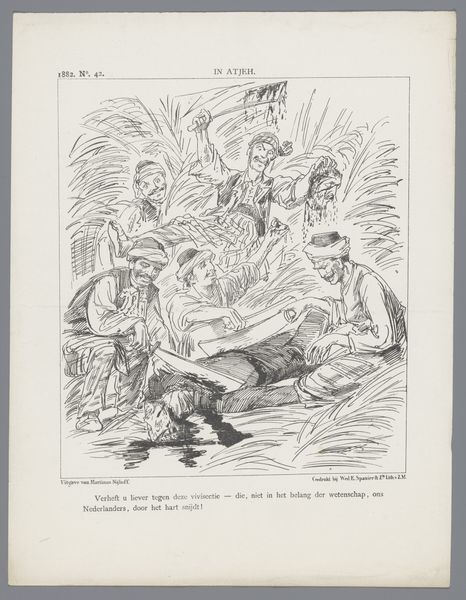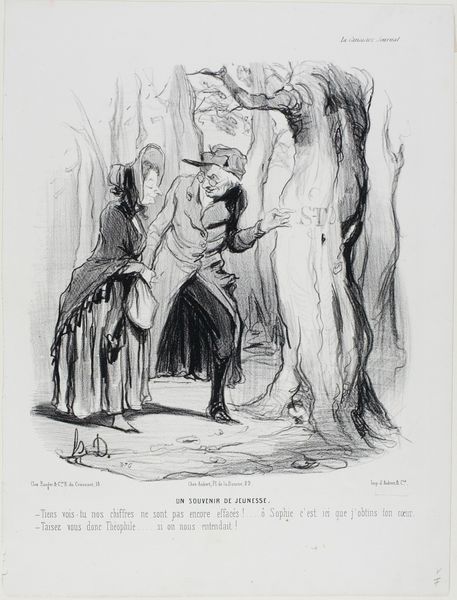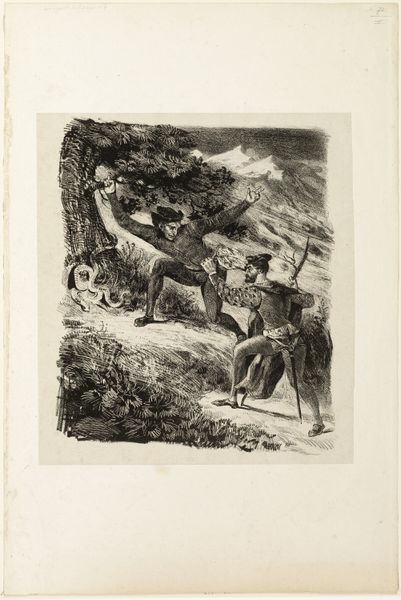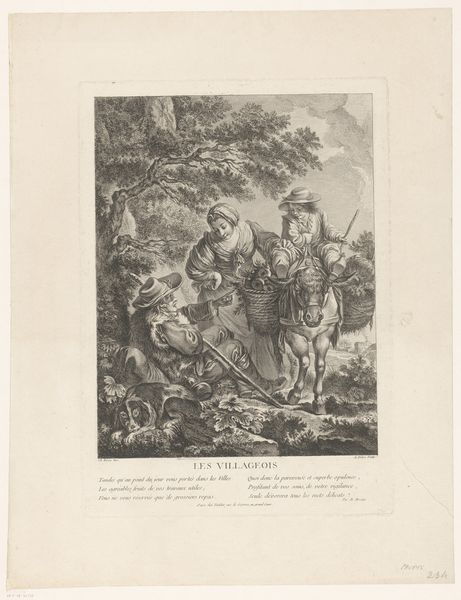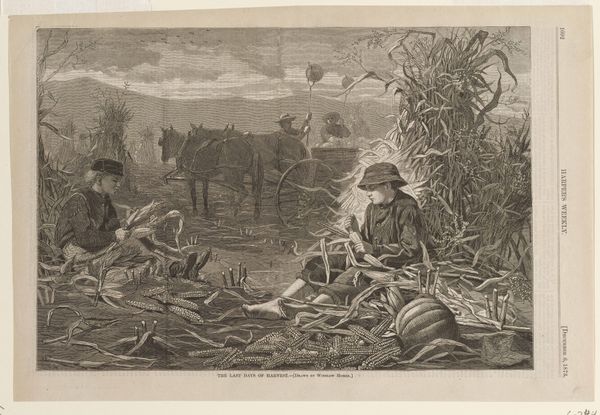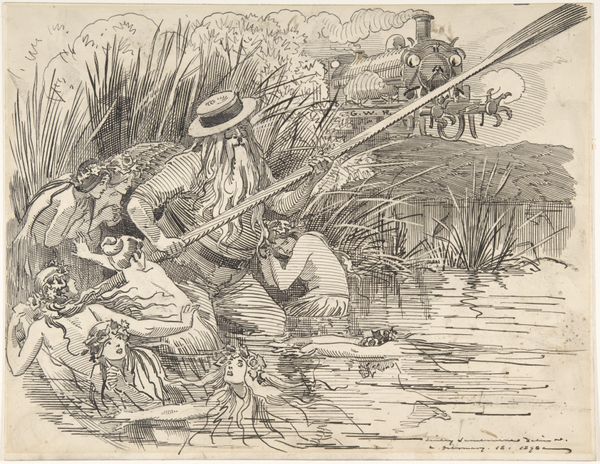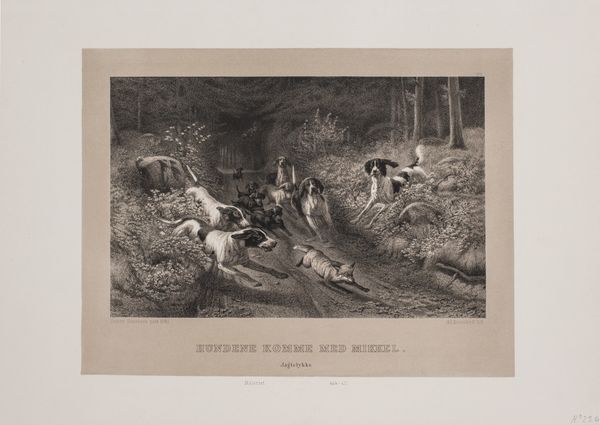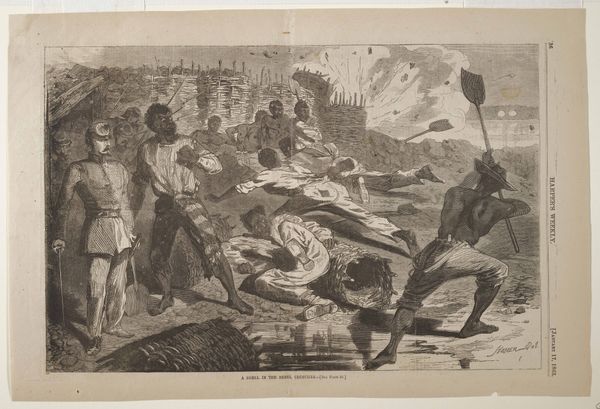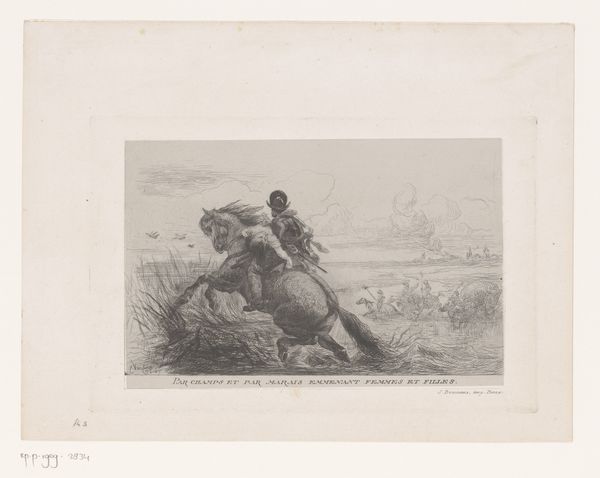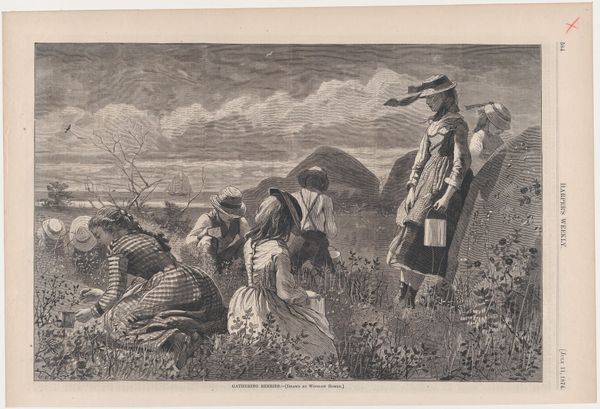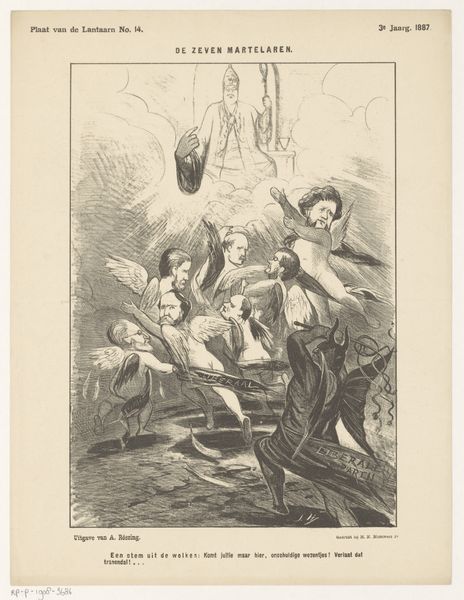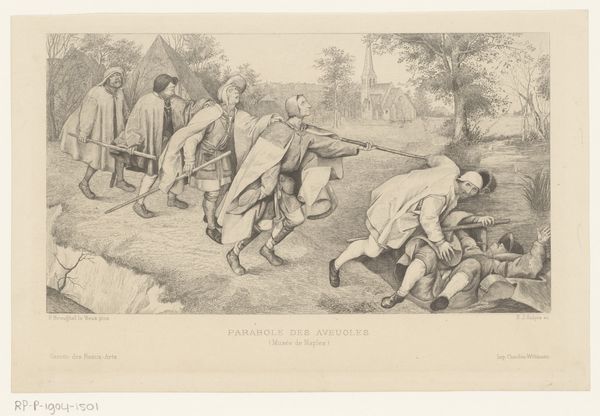
lithograph, print
#
16_19th-century
#
lithograph
# print
#
caricature
#
cityscape
#
genre-painting
#
history-painting
Dimensions: height 260 mm, width 335 mm
Copyright: Rijks Museum: Open Domain
Curator: This lithograph from 1886 is titled "Spotprent over de afschaffing van de suikeraccijns," which translates to "Cartoon about the abolition of the sugar tax." It's a piece by Jan Holswilder, originally printed in De Lantaarn No. 15. Editor: It’s unsettling, actually. The contrast is very sharp; the eye is immediately drawn to the seemingly ill figure reclining in the foreground, the palette somber, almost monochromatic due to the printing process. What were the common lithographic practices in the 19th century? How might they shape interpretation? Curator: Holswilder’s choice of lithography allowed for relatively inexpensive reproduction and mass distribution. That in itself speaks to the artwork's function as a form of social commentary, meant for a wide audience to understand and engage with the sugar tax debate. The materiality inherently makes this more democratic than a singular, expensive oil painting. Editor: Absolutely. And look how the figures are rendered – almost caricatures of themselves. We've got the Dutchman portrayed as a somewhat bumbling doctor and the ill figure and pleading woman seeming more obviously local inhabitants, possibly from Java, or the Dutch East Indies. Is it implying a colonial relationship between the Netherlands and its colonies through its production methods and characterizations? Curator: Precisely. The political implications are layered within the depiction. Sugar was a key commodity in the Dutch colonies, and the sugar tax affected trade and consumption significantly. The characters, materials and caricatures reflect the socio-economic disparities that the tax exacerbated between colonizer and colonized, reflecting its impact. Editor: I see a dark bird of prey looming at the top of the cartoon, and a sort of bulldog in the lower corner, as well as the inscription below referring to medication. What meanings might this hold? Curator: The predatory bird possibly symbolises impending disaster of some sort, and I would guess that the dog reflects subservient compliance. But I'm happy to look more into that. What strikes me is how it uses its materials, and its mass audience, to engage its viewers politically, but not everyone would have been well-represented. Editor: The lithograph has really sparked discussion regarding colonial policies of the time. I had just not expected that kind of critique from this imagery at first glance.
Comments
No comments
Be the first to comment and join the conversation on the ultimate creative platform.
